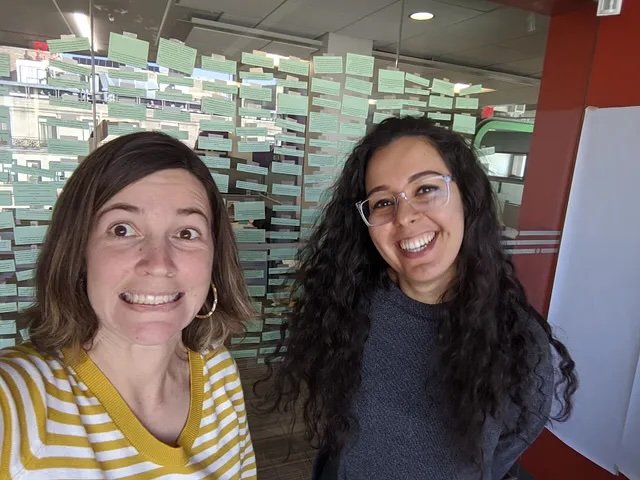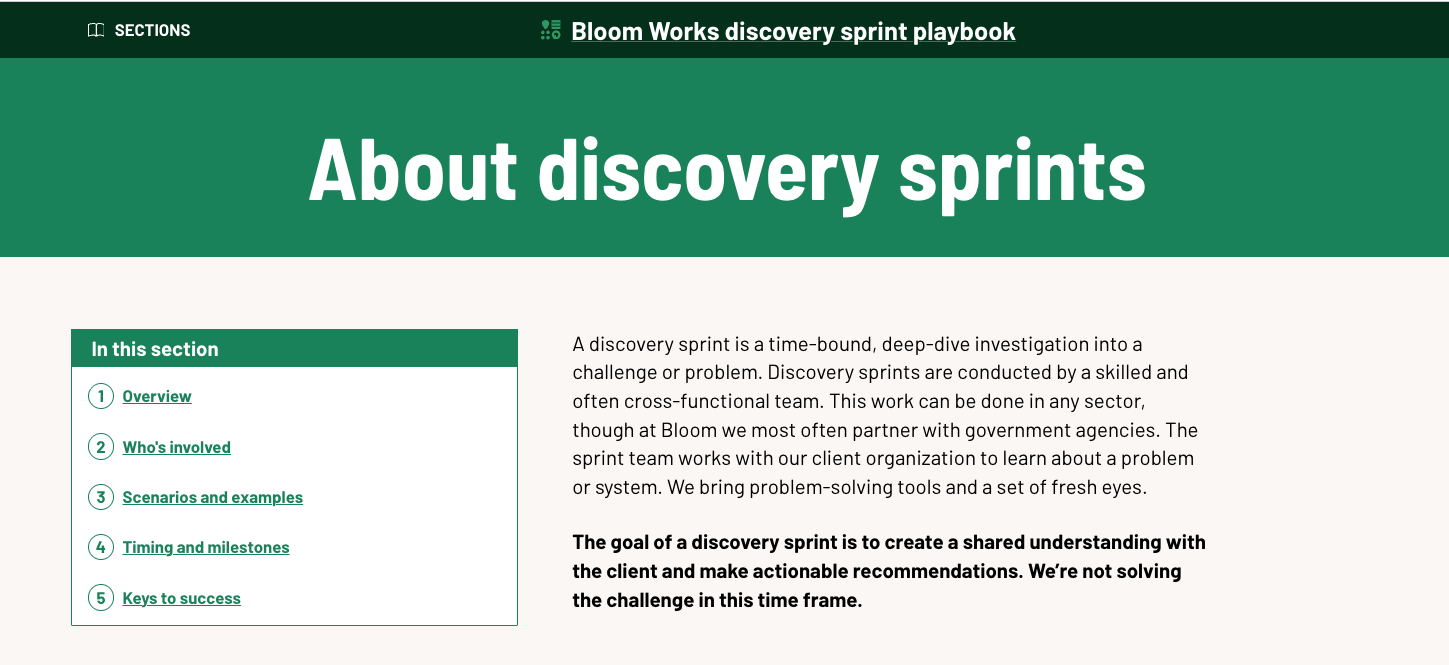
Tool
Keys to a successful discovery sprint
An intro to Bloom's playbook for investigating challenges
What is a discovery sprint?
A discovery sprint is a time-bound, deep-dive investigation into a challenge or problem. Discovery sprints are conducted by a skilled team that brings problem-solving tools and a fresh set of eyes.
At Bloom Works, we most often partner with government agencies, but this work can be done in any sector. We have a discovery sprint playbook for anyone to practice approaching a problem with this framework.
In this post, we’ve excerpted a handful of tips that tend to make discovery sprints more successful. We’ve also shared how we center marginalized perspectives — a foundational part of discovery sprints at Bloom.
Keys to success
To maintain momentum (and not feel overwhelmed), come back to these keys to success:
1. Stay focused on your goal
Define your guiding goal (or “north star”) early and return to it often with the team. You want to build a shared understanding of a process, system, or service. Make sure everyone on the sprint team is moving intentionally toward that goal.
2. Remember your client and stakeholders are knowledgeable
Your client has likely been grappling with this problem space, possibly for years. They know the lay of the land, what has been tried before, and who talks to who in the government agency. Be mindful of their expertise, learn from them, and know that they brought you in for a reason. Your job is to respectfully surface new data and overlooked perspectives, so you can use your combined knowledge to find a new way.
3. Don’t jump to a solution
A discovery sprint is about trying to understand and frame the problem, not solve it! Discovery sprint challenges are typically much too large or complex to consider solving in a handful of weeks. Instead, we spend our time identifying potential paths forward. Picking a solution too early can take away from understanding the problem, getting user perspectives, and moving within relevant constraints.
4. Stay curious and flexible
Be The Sponge. Discovery sprints are about absorbing as much information as possible. New findings should shape and refine your understanding and your deliverables. Clients can and will shift things — and that’s OK! Not only may clients shift, but your own team’s assumptions, ideas, and theories can (and should!) shift as you gather more information.
5. Communicate, communicate, communicate
Share knowledge. Keep each other (and especially the client) up to date on new discoveries, brick walls you may hit, and pivots throughout the process. This can help you get to solutions more quickly and keep everyone aligned. Create intentional spaces for designing with each other and with the client. Check in on each other, especially during an emotionally taxing sprint or time — we’re all human, after all.
6. Budget time to dive deep into synthesis and decide on recommendations
It is common for collecting data during the discovery phase to eclipse the effort truly needed to review and synthesize findings. Be vigilant about holding time for this during the sprint process.
7. Bake in time to be human with each other
Everyone has different needs, work styles, and approaches — embrace it! Take the time to learn about each other and how to work together. Set up semi-regular activities (like ice breakers or casual coffee chats) and devoted time to debrief, reflect, and connect.

Working with with diverse and marginalized populations
We aim to center the needs of people who rely on government services. This is a foundational part of our discovery sprint practice. Participants (people we interview, survey, or “co-design” with) may include people who have been disadvantaged by unfair systems and structures.
We center and uplift these perspectives while acknowledging the power we hold as researchers and designers.
As humans, our default is to assume our own cultural lens when approaching our work. Acknowledging and learning about differences across cultures is an important aspect of how we can make participants feel comfortable, safe, and willing to engage.
At Bloom, we practice cultural competence by being transparent with participants and taking a trauma-informed approach.

Check out our full playbook for more useful tips, templates, and checklists.
We expect the playbook to expand and change as more people use it and provide feedback. So, if you learn something in your own sprints that you don’t see in our playbook, let us know! You can open a pull request or send us an email.
Contact us at hello@bloomworks.digital.
